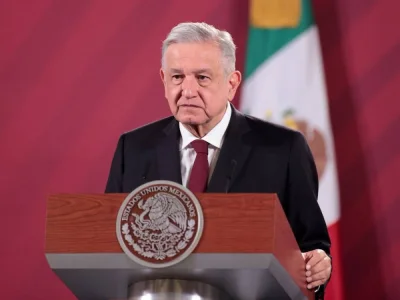Donald Trump’s surprise victory in the US presidential election followed by Opec’s first production cut in years helped trigger some significant market moves in November. US bonds are heading towards the first bear market in 30 years with yields spiking higher in response to the new Trump administration’s pledge to increase spending and cut taxes.
The US dollar has been moving higher in response to a rising interest rate gab, not least against the euro and the Japanese yen, but also against many emerging market currencies taking the hit from rising financing costs.
Precious metals remained under pressure with investors reducing exposure in response to rising stocks, bond yields and the dollar. A key technical support level in gold was broken, and this further reduced the attraction of holding precious metals, at least in the short to medium term.
The total holdings of gold in exchange-traded products have dropped by 141 tonnes, with daily reductions seen since November 9. From a technical perspective, the break below $1,172/oz is signalling that the uptrend since last December is on hold or finished. We believe that plenty of gold negative news has by now been priced in, but until ETP flows and bonds stabilise the market will struggle as rallies will be met by sellers reducing exposure.
Industrial metals retraced following recent strong gains. A stronger Chinese yuan and renewed attempt by regulators in China to clamp down on rampant speculation in several commodities, including copper, steel and iron ore, triggered profit-taking.
The main story, however, this past week was Opec announcing a 1.2mn barrels/day cut in production. This came in response to persistently high global inventories and low prices that increasingly have put petro-economies under heavy strain.
The fight for market share, which saw crude oil more than halve in value since 2014, was called off on Wednesday when Opec members meeting in Vienna made good on the promise they made in Algiers back in September. The first coordinated cut to production in eight years helped trigger a major rally in oil, but also among oil exploration and production companies finally seeing light at the end of tunnel. The burden of cutting production is to be shared among the members apart from Indonesia, which put its membership on hold, Libya and Nigeria, which are both exempt, and Iran, which was allowed a small increase. Non-Opec members also announced plans to cut production by an additional 600,000 b/d, with half of it coming from Russia.
Ahead of the Opec meeting, a tough stance from Iran and Saudi Arabia had raised concerns that this would be another failed meeting, and crude oil prices came under renewed pressure. Seeing the negative price impact of potential failure playing out in front of the members gathering in Vienna may have helped the cartel put aside political differences.
A persistent large contango due to overproduction and oversupply, not least in Brent crude, had triggered a build-up in short positions before the meeting. The closing and potentially also reversing of these speculative positions have the potential of taking the market higher in the short term before attention eventually turns to the execution of the agreed cuts, both from Opec and non-Opec members.
Opec has a poor history of compliance, and that may come back to haunt the producers once the initial euphoria and position adjustments have run their course. Another question that remains is: just how many of the 600,000 non-Opec barrels will be removed from the market? Russia has never before supported a concerted production cut, and the market may adopt a “show-me-the-barrels-first” approach before believing it will happen.
Libya and Nigeria both pose a challenge to the deal. Being exempt from the deal has the potential, stability permitting, of increasing production by more than 500,000 b/d over the coming months. Any increase from these two countries will naturally dilute the impact of the agreed production cuts.
The reason why we see the upside potential limited beyond the initial position adjustments is the potential response that higher prices will trigger from US producers in the coming months. The share prices of some of the major US shale oil producers were some of the biggest winners on Wednesday. The SPDR S&P Oil and Gas exploration and production ETF (XOP) jumped by 11% and is currently up 41% year-to-date. The breakeven cost among US high-cost producers has collapsed during the past year, and this has left many in a position to react to rising prices faster than before.
The big question however remains whether companies will be using improved revenues to invest in new production or whether the focus will be on bringing down debt which has been accumulating during this time.
As a consequence of the production cut, depending on the eventual size, stocks will begin to draw down sooner than previously expected.
This process will support the market, but initially it will also lead to an additional source of supply from abandoned storage plays. The six-month contango — the discount between prompt and deferred futures contracts — has almost halved this week.
As a consequence, we could see storage plays, either on ships or in tanks, being abandoned as the profit these transactions begin to fade.
Crude oil surged higher with Brent crude oil touching a new high for the year. Before questions will be asked with regard to the ability and willingness of the Opec members to deliver the promised cuts, the oil market has moved higher. Not least due to re-positioning in the futures market where rising short bets ahead the Opec meeting are being squeezed out.
We see limited upside above $55/barrel, but the need to adjust positions could trigger an overshoot to the upside. Opec has by their action most likely managed to establish a floor under the market, potentially around $45/b, but if $70/b is the target they may well have to wait a long time.
*Ole Hansen is head of commodity
strategy at Saxo Bank.

.


